How many actresses and actors owe their success at the Oscars and Golden Globes to a performance that was in complete contrast to their image or their nature? The history of theatre and cinema is riddled with such artistic surprises that make people stop and think and say to themselves “I would never have thought that he/she could have played that role so well”.
Think of Tom Hanks in Philadelphia, Steve Carell in Little Miss Sunshine, or even Arnie [Editor's note: Arnold Schwarzenegger] in Kindergarten Cop and Sly [Editor's note: Sylvester Stallone] in Cop Land.
But beyond the performance, casting against type can also be a risk. When misjudged, or incorrectly dosed, casting against type can be drastically bad, ridiculous and even destroy the image of an actor or actress. So there is no casting against type without an element of risk.
To succeed you have to surprise, sometimes change appearance, but above all work hard. You also need to feel inspired – almost possessed – by the role. Being cast against type is not a job, it is a personal contest that pushes you to leave your comfort zone to try something new.
In a wider context, casting against type can also apply to other fields. It is about the ability to surprise people by rethinking codes or calling solidly established views into question.
An example: cars and the image of diesel, a “slow” fuel that “stinks”! Based on that, you could never expect a race car with a diesel engine to dominate. But Audi and Peugeot tried a form of technological casting against type and Audi won the prestigious Le Mans 24 Hours with a diesel engine in 2006. Staying with cars, I’m also thinking of the Porsche 959 from 1989, which won the Paris-Dakar rally. Would anyone at the time have expected a Porsche in the style of a grand tourer to win a race on dirt tracks in Africa?
Since casting against type is at the crossroads between imagination, risk-taking and defying preconceptions, any industry can have a go. So how has this artistic artform been transferred to watchmaking?
A watch is a mixture of style and functionality. Style means perception and taste. Function means technical prowess. Certain preconceptions arise when the two are intertwined. One example is that a diver’s watch must be round and that a dressy watch should be square or rectangular.
If you think of a dress watch, the Jaeger-LeCoultre Reverso or the Cartier Tank may immediately come to mind. But for a diver’s watch it will probably be the Rolex Submariner, the Omega Seamaster or the Blancpain Fifty Fathoms. They are all round. These stylistic markers stay with us and are imposed upon future customers. The preconceived idea is born.
But have diver’s watches always been round?
It’s 1926, the year when Rolex invented the first water-resistant watch. Let’s get our definitions clear: we are talking about a watch that resists water and dust. The case is sealed and is given the now-famous name of Oyster. Rolex moved from theory to practice in 1927 by providing undeniable evidence of the water resistance of its Oyster. Mercedes Gleitze swam across the English Channel with a Rolex on her wrist. She finished her adventure after 10 hours and not a single drop of water entered the watch.
If we look at the design of this first water-resistant watch we can see that although the dial is indeed round, the case isn’t quite so round. In fact it is more cushion-shaped – a shape that is later seen in the military Panerai watches of the 1940s.
But was this Rolex Oyster the first diver’s watch? Not really, because even though it resisted water well, it was not tested at depth. It was a swimmer’s watch! Furthermore, at a time when diving didn’t even exist, what would be the point of testing a watch’s resistance to water pressure. None, other than making a point.
And this is precisely what Omega did in 1932, five years after Mercedes Gleitze swam across the Channel. This was the year that the brand from Biel launched its Marine and decided to test its resistance to water pressure by throwing it into Lake Geneva. It went down to a depth of 70 metres. And you know what? The Marine is – almost – square! So it’s quite amusing to note that the first true diver’s watch was not round and not tested at sea, but in a lake!
But how did Omega achieve this feat given that water resistance normally requires gaskets that can withstand pressure and that any corner creates a weak spot? The technical choice was particularly innovative, if not unique. Omega created a square case that was incorporated inside another rectangular case. So it was a kind of double chamber. The watch was re-issued in 2007 as part of the Omega Museum collection and I’m disappointed that it didn’t get more exposure.
So the first diver’s watch had nothing to do with the image that we currently have of watches that plumb the depths. But what happened next?
After the Oyster and the Marine, the diver’s watches that followed gradually got rounder, as if it was a kind of natural evolution. The Oyster became round. And, while Omega continued with the Marine, it also launched the Seamaster diver’s watches, confirming the trend. Many other brands followed their lead and the past was forgotten… Few brands tried designs that waivered from the norm. But we have to mention Jenny with its Caribbean 1500, fitted with an almost square case, and Omega again with the very unusual Ploprof.
But apart from these attempts, diver’s watches remained largely round, until recently. And this is what is so interesting about the Bell & Ross BR 03-92.
Why Bell & Ross?
I have a special fondness for Bell & Ross. A long time ago I lived in the 16th arrondissement in Paris and I regularly went for breakfast at one of the brasseries at the Porte de Saint-Cloud. I sometimes noticed young executives wearing some nice chronographs. One day I asked one of them where his watch came from and this is how I first heard the name Bell & Ross. If I recall correctly, it was in 1994 or 1995.

The French brand has been a success. It has managed its growth well, starting with a partnership with Sinn and later producing its own watches. And not just any old watches! I’m sure we can all remember the square BR 03 and its many permutations. But there are also the vintage themed watches (the WW1 and WW2 models) and those built for adventures at sea, on land (thanks to a partnership with Renault F1 and the RS 18 watches) and in the air.

It recently rose to fame (without its knowledge) when Alexandre Benalla [Editor’s note: a former member of French president Emmanuel Macron’s security detail] appeared before a parliamentary committee wearing a Bell & Ross that had been produced for the Prime Minister’s close protection service…
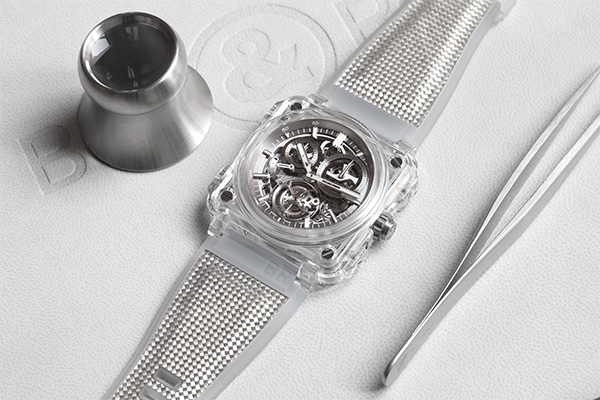
As proof that the brand has grown, it has also turned to more extreme – and more off-beat – models, such as sapphire tourbillons (the BR-X1 Tourbillon and the surprising BR-X2), the Bell & Ross Skulls – including the most recent and highly amusing BR 01 Laughing Skull and the collection using cockpit instrument displays for the dials, from which the BR 01 Red Radar is my favourite.
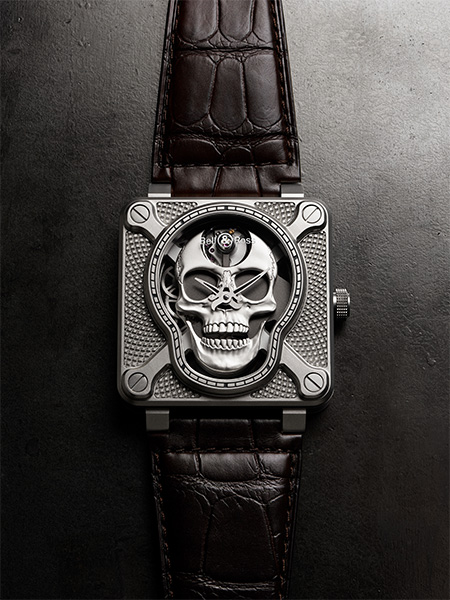
In short, Bell & Ross continues to grow and to surpris. So when the brand decided to relaunch a diver’s watch, we could expect a surprise. It was an exercise in casting against type with the first – genuinely – square diver’s watch in history.
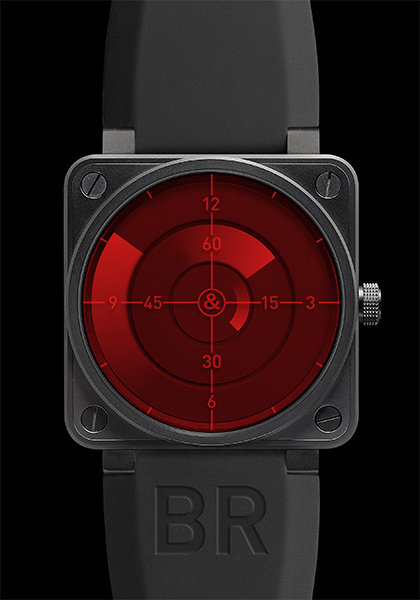
The Bell & Ross BR 03-92 Diver: squaring the circle
It’s easy to summarise what the series of three Bell & Ross Divers offers us. A first square watch that is water resistant to 300m. The Diver is available in black with an orange hand, in blue with a yellow hand and in bronze as a limited edition of 999. Each model uses the design that made the BR 03 so successful: a square case, four screws, a date between 4 and 5 o’clock and the brand’s own strap cut. All in a 42mm case housing a solid Sellita movement, which is standard in the Bell & Ross collection.
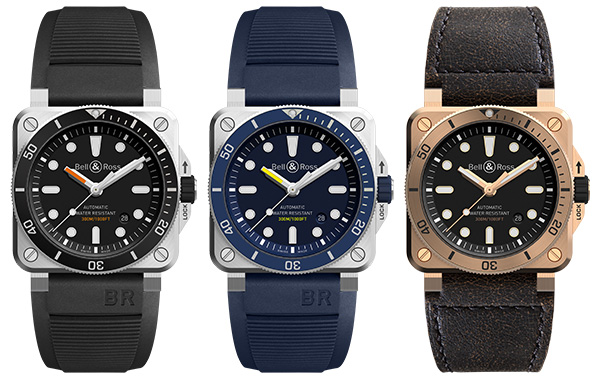
So what differentiates this BR 03-92 from its colleagues?
First of all, it has a diver’s bezel that is quite slim. There is no ceramic here, but there is an aluminium insert. A lot of people prefer ceramic, but I’m still a fan of aluminium that “lives” with the watch and scratches but gives it character.
The distinctive numerals of the BR 03-92 have been replaced with round or rectangular hour markers. The shape of the hands has also changed. They are strangely thinner than those of the regular models but seem to have a more powerful SuperLuminova coating.

Another element that sets the BR Diver apart is the presence of a relatively thick internal flange. On the classic model the flange is flat and almost invisible, but it is very present on the Diver and bears the graduations for the seconds. This makes the dial look smaller and gives the watch a stocky look.
Our Bell & Ross Diver also has the noticeable difference of having a crown protector bearing the word LOCK and an arrow that indicates in which direction you need to turn the crown to maintain water resistance. The crown is also more imposing that on the one on the classic models and is rubber-coated for better grip.
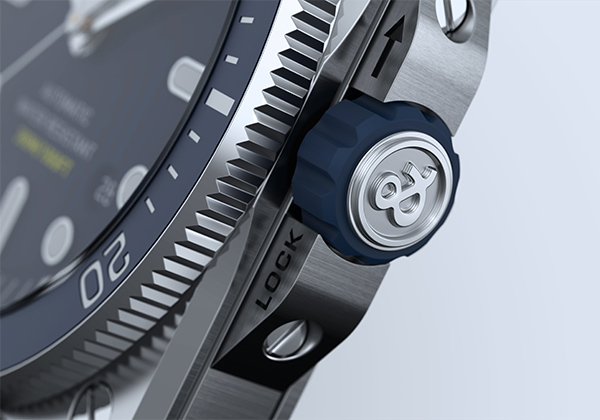
The caseback is in the typical Bell & Ross style: flat with a few indications like the model name, reference and some technical elements.
The strap is rubber but the BR letters are more discreet. The buckle is as simple and easy to open as ever.
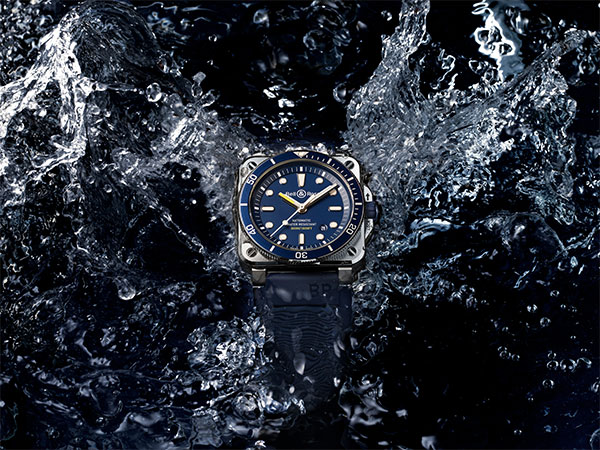
As mentioned, there are three versions of the Diver available: black, blue and bronze.
The bronze model is particularly appealing. Apart from the material, it also stands out thanks to its beautiful thick leather strap, hour markers with rose-gold surrounds and a full bronze bezel. It is my favourite of the three, but I have to admit that I like the blue model as well.
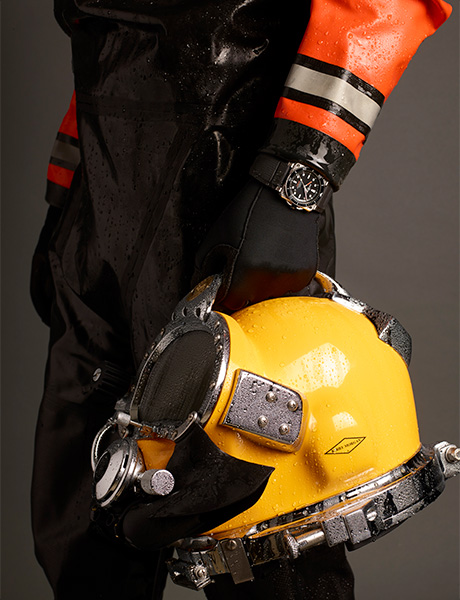
What does the devil’s advocate think?
Defending the devil is a bit like being cast against type, so the devil’s advocate has a certain amount of sympathy with this Bell & Ross. But there are a few details he doesn’t like.
First of all, and as always, why clutter the dial with the word “Automatic”? It makes the whole thing look heavier, especially when we know that the dial on the Diver has a smaller opening than the other models. Less would be more and having too much information on the dial should be avoided. The same goes for the crown and its “lock”, which in my view is unnecessary.
I like the way the strap is attached to the watch, but the Hex screws do make changing the strap a little complicated, because you need an Allen key.
How to wear the Bell & Ross Diver in a style that is cast against type?
I have several ideas for the best style to accompany this square diver’s watch. Since it is a very sporty watch, why not try a dinner jacket and have a strap made out of black fabric? No, maybe that is going a bit too far!
But there is nothing wrong with camel skin or a water-resistant calfskin.
Once your diver’s watch is ready, let’s think about the best outfit.
There are a number of clothes that could create this off-beat impression. For the trousers I can see something from Brunello Cucinelli going well, since they offer an original combination between pleated trousers and a lace-up waist similar to jogging pants. This version is also in navy blue wool with thin tennis stripes. Amusing and original.
Underneath, go for a white T-shirt from Violent Gentlemen in Anaheim (California) and to stress the unhabitual look, a hoodie – but in wool or cashmere (Gant). Then, since the weather is getting colder, try another classic in casting against type: a blazer in the style of a down jacket, ideally from Hackett.
To round this off, you just need the shoes and only a pair fit for the city can match our theme. Check out Berluti’s – extreme – New Ultima, Bally’s Chack mountain books or the quirky tweed sneakers by Zonkey Boot.
Now you are ready to brace the first signs of winter and maybe the first walks in the snow.
Far from the sea…





